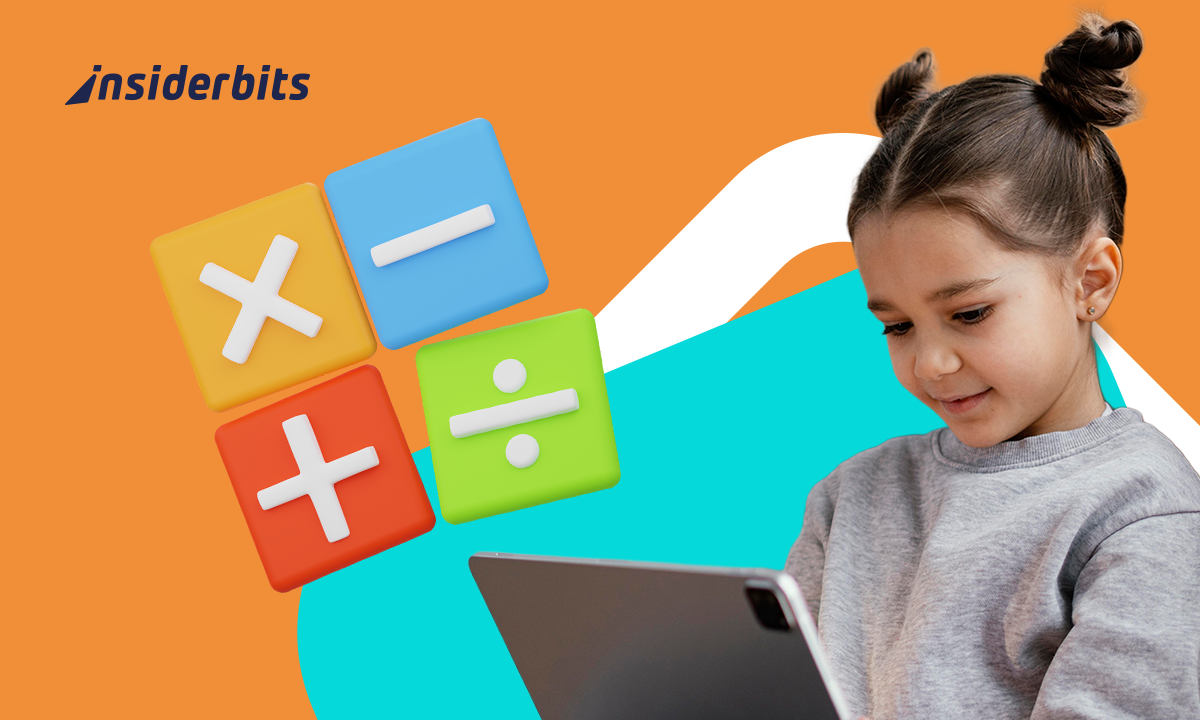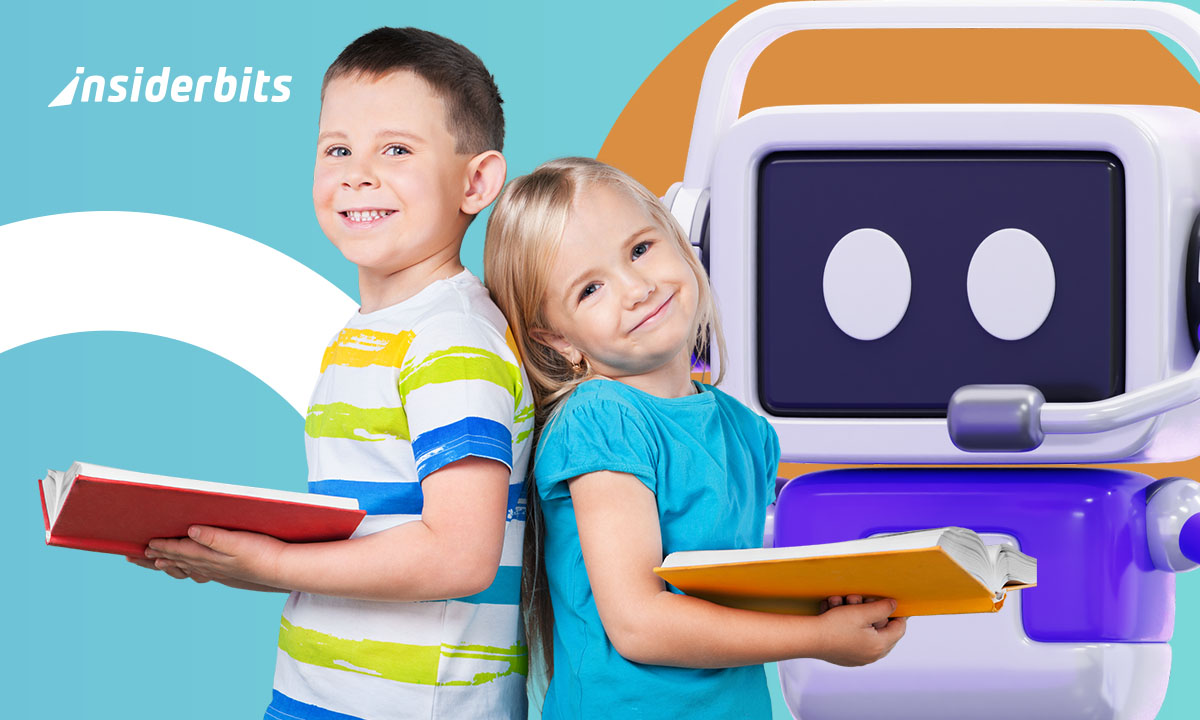The art of teaching toddlers letters usually can feel like chasing butterflies. Just when they seem focused, the moment disappears. Well, you must know this is a common thing at that age. Some parents think screens can help, but only if the tools are gentle. That’s because, in early childhood, overstimulation leads to frustration fast.
That’s why this Insiderbits guide highlights apps that teach toddlers letters and support early alphabet learning without overwhelming children or parents. From offline access to smooth narration, the features below make a big difference in how toddlers experience letters for the first time. Remember, when done right, digital learning can become a soft and playful entry into literacy.
- Toddler Games for Your Child to Play, Learn, and Grow!
- Engaging Baby Stimulation Activities for Toddlers
- The Best Ad-Free Toddler Games for 1-3-Year-Olds
Why these apps teach toddlers letters tantrum-free
We all know how difficult it is to teach toddlers letters and keep them engaged for a long time.
However, there are some apps that work well with toddlers focusing on one goal at a time, like tracing a letter or hearing its sound in a calm, consistent voice.
ABC Kids – Tracing & Phonics
ABC Kids – Tracing & Phonics (iOS/Android) guides toddlers through each letter using animations that feel slow and deliberate.
The app invites children to trace letter shapes with their fingers, reinforcing direction and form without rushing or penalizing mistakes.
When a child gets it wrong, the feedback is soft and encouraging. There’s no pressure to “get it right” the first time, which helps maintain attention and reduce frustration over repeated practice.
This calm repetition is key for toddlers. Each motion becomes familiar, and every sound feels predictable. For young learners just starting their alphabet journey, that consistency builds trust and comfort in the process.
3.9/5
Endless Alphabet
Endless Alphabet (iOS/Android) introduces letters through animated monsters and silly word puzzles, creating a joyful mix of phonics and fun.
While it includes more visual effects than ABC Kids, the pacing remains slow enough for toddlers to follow.
In this app, each word begins with letter sounds, then unfolds into a playful sequence where kids drag letters into place. As they do, the app pronounces each one, reinforcing auditory recognition alongside visual placement.
The characters and colors are entertaining without becoming chaotic. Even though the animations are lively, they unfold with gentle timing, helping toddlers stay focused as they absorb new words and repeat familiar sounds.
3.7/5
How letter recognition can be fun (really!)
First of all, parents and teachers need to know that learning letters doesn’t need to feel like a drill. If so, no one—toddlers even more—will focus on the matter.
That said, if you want to teach toddlers letters, fun means interaction.
Therefore, alphabet apps are built to transform repetition into play when they frame each letter as a character or a sound to explore.
In Endless Alphabet, where they excel at this approach, each letter unlocks a silly animated word, introducing toddlers to vocabulary while reinforcing the alphabet visually and aurally.
Meanwhile, ABC Kids keeps things tactile.
Tracing games let toddlers follow letter paths with their fingers, building motor memory as well as visual recognition. The app praises effort, not precision, encouraging practice without pressure.
Ultimately, the key is rhythm. Toddlers enjoy routines that let them explore the same action several times before moving on.
What features keep toddlers focused and calm
The main features that serve to teach toddlers letters and keep’em focused are smooth transitions, slow-paced narration, and gentle visual cues.
That’s because these features reduce overstimulation and help toddlers stay engaged without overwhelm.
Overall, you should focus on apps that limit choices and allow children to stay inside one learning moment longer, which is ideal for early brain development.
ABC Kids, for example, runs without internet access, which reduces distractions and prevents sudden changes in content. That stability turns it into a safe space for repetition.
Usually, the design in these kinds of apps aims to avoid fast cuts or flashing lights, which helps toddlers remain attentive without sensory spikes.
For families trying to introduce screen time as a learning aid, these features turn a 10-minute session into productive literacy exposure without frustration or overstimulation.
How parents can support learning without stress
To begin with, toddlers don’t learn letters in isolation. The role of parents, even in digital learning, is to provide calm reinforcement and model curiosity.
Start to use the app alongside your child, narrating actions or repeating sounds together. This creates a social learning context, helping toddlers associate letters with communication, not just performance.
Also, avoid extending sessions when the child loses interest. There’s no need to force toddlers to learn letters when there’s no interest.
Instead, ten focused minutes each day offers more value than an hour of distracted screen time. Let the child lead within the boundaries of a short routine.
When parents observe, remember to participate gently, the apps we listed above become even more effective, because they’re paired with emotional safety and human connection.
Tips for building a daily reading routine at home
There are numerous tips to build a daily learning routine at home. We’ll list some of these tips below.
Start by establishing a rhythm around letters. It doesn’t require a full curriculum. Toddlers learn best when routines are short enough to follow their moods.
So, try associating the app with a daily moment, after breakfast or before a nap, for example.
As we pointed out above, keep the session short to avoid boredom and loss of interest. Five to ten minutes of guided play is enough to reinforce a letter, explore a new word, or complete one tracing activity.
In addition, to keep things interesting, alternate screen sessions with physical books or letter toys. Let the app introduce a sound, then point it out later in a picture book or label around the house.
Lastly, always praise effort, not results. Toddlers thrive when repetition is framed as discovery, and when mistakes are treated as part of learning, not something to fix, but something to revisit joyfully.
Apps that teach toddlers letters without tantrums – Conclusion
Today we learned that to teach toddlers letters doesn’t need long lessons or loud games to learn the alphabet. They need to flow in their rhythm and tools that match their developmental pace.
If parents have patience and act with presence, when paired with the apps above, they will become quiet allies in early literacy, inviting toddlers to engage, and turning the alphabet learning into a playful part of everyday life.
Try one of these apps today and begin building a letter-learning habit that fits into real routines.
Related: Empower young readers at home with free apps!
Enjoyed this article? Save the Insiderbits blog to your favorites for the latest tools, creative tech tips, and photo editing breakthroughs.





